In the North American Bear Center in Ely, MN, lived Ted, a black bear that mesmerized the attention of many in his lifetime. With a weight estimated to be between 800 and 1,000 pounds, Ted is believed to be the largest black bear to ever have lived in captivity. Let’s dive into Ted’s story and the importance of his existence.
Meet Ted: The Colossal Black Bear
Ted lived in the care of Dr. Lynn Rogers, a well-renowned bear researcher, since the opening of the North American Bear Center in 2007. Dr. Rogers has been working tirelessly to educate people about black bears and reverse the habitat loss of these animals. Through his work, he realized the need for a center that focuses on black bears instead of grizzlies, so he started the North American Bear Center.
Ted’s Size: Awe-Inspiring and Mysterious
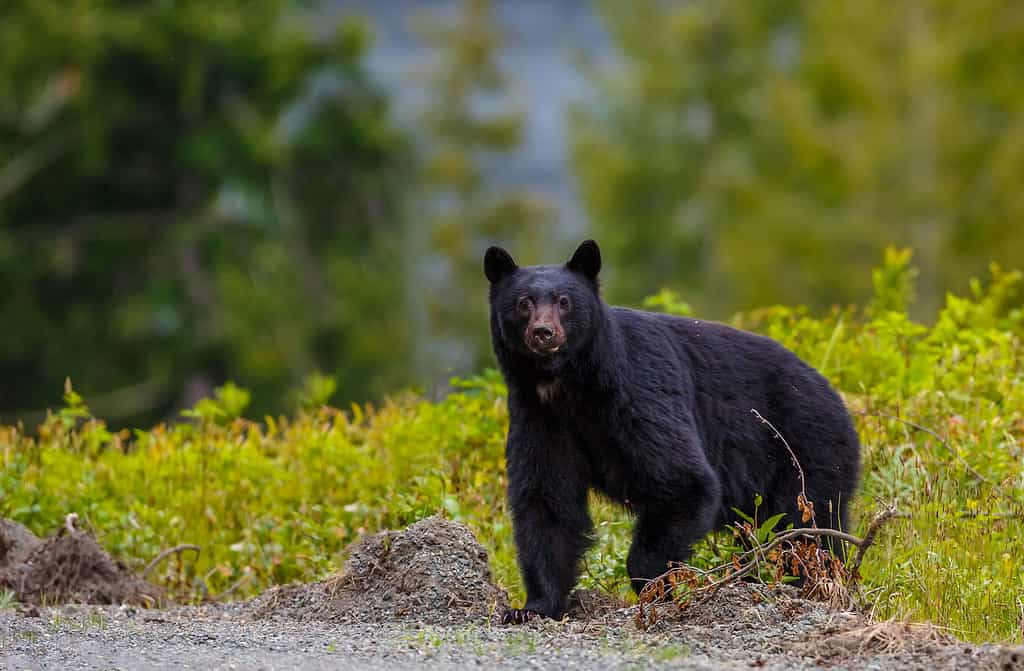
On average, black bears can reach a maximum weight of about 660 pounds. Ted, though, weighed between 800 and 1,000 pounds.
©Menno Schaefer/Shutterstock.com
While the estimated weight of Ted varies between 800 and 1,000 pounds, it is still unclear what his actual weight was. His size was awe-inspiring, with his towering figure compared to the height of a telephone pole. The mystery surrounding his weight only ever added to his appeal, attracting visitors worldwide to see him in person.
Unfortunately, Ted passed away on October 31, 2022, the North American Bear Center announced in a press release last year.
The Importance of Ted’s Existence
Ted’s existence was crucial to the work being done by the North American Bear Center. The center aims to change people’s myths and perceptions about black bears and educate the general public about these animals. Additionally, the center is working towards reversing the habitat loss of bears, ensuring their survival for generations to come.
3 Reasons Ted Grew So Big
According to records, when Ted was found, he was already a large bear. It is unclear why he grew to be as large as 800 and 1,000 pounds. However, there are three possible reasons why Ted may have reached such an impressive size.
Diet
A bear’s diet can significantly impact its growth and size. Black bears are omnivorous and eat various foods, including berries, nuts, insects, and occasionally larger prey like deer. It is possible that Ted had access to abundant, high-quality food sources that allowed him to grow to his current size.
Genetics
Like humans, animals can have genetic predispositions that influence their size and growth. It is possible that Ted inherited genes that contributed to his large size.
Age
Bears can continue growing as they age, although the growth rate may slow down. Ted’s age may have contributed to his current size. However, as his exact age is unknown, it is difficult to determine how much this factor played a role.
It is important to note that while these factors may have contributed to Ted’s impressive size, they are speculative. Without further information, it is difficult to determine why Ted grew so large.
How Big Can Black Bears Normally Get?
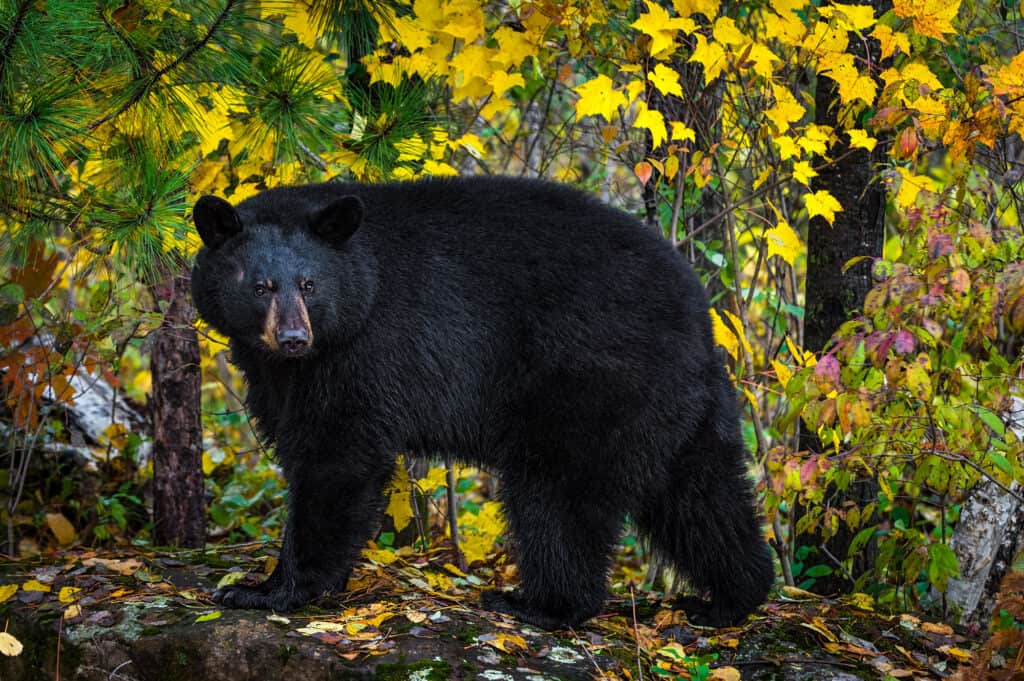
Adult male black bears can weigh anywhere from 130 to nearly 700 pounds. On the other hand, females range between 90 and 330 pounds.
©Holly Kuchera/Shutterstock.com
The size of black bears can vary depending on various factors. Some include genetics, sex, age, and environmental conditions like food availability. Typically, males are more significant than females. Adult males weigh 130-660 pounds and stand 5-6 feet tall at the shoulder. In comparison, adult females typically weigh between 90-330 pounds and are 3-5 feet tall at the shoulder.
Adult black bears weighing over 500 pounds are considered exceptionally large. While rare, some black bears can grow larger than the average size. The largest black bear on record weighed over 800 pounds. It is essential to note that these exceptional individuals are not representative of the species.
How Does the Size of Black Bears Compare to Other Bear Species?
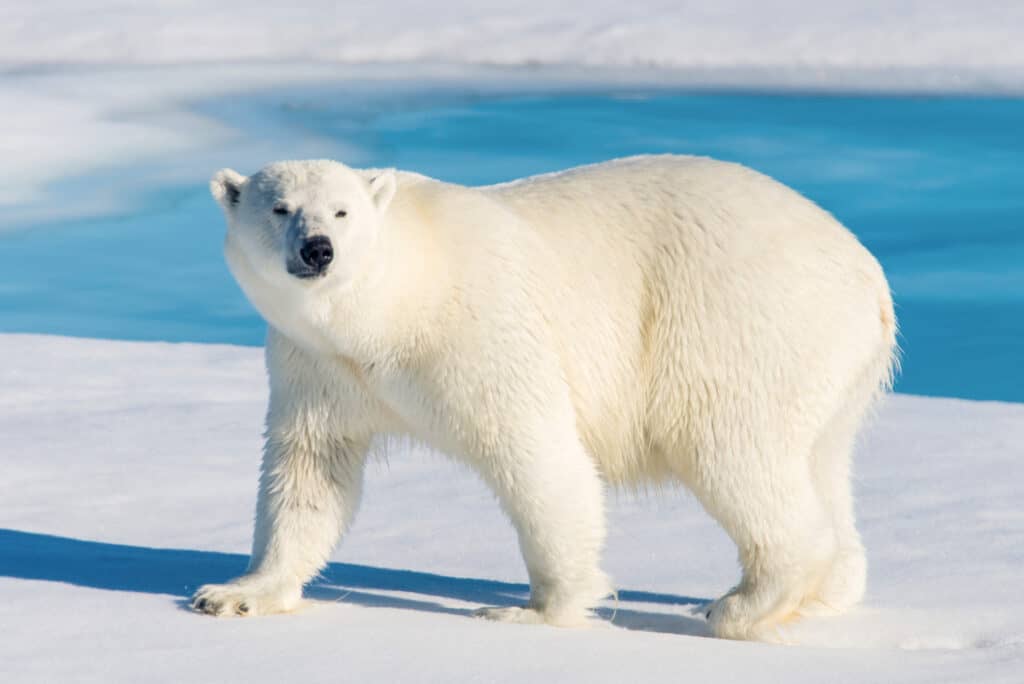
Polar bears are the world’s largest extant bears.
©iStock.com/Alexey_Seafarer
Black bears are smaller than other bear species. Brown bears, for example, are larger and may reach heights of 3 to 5 feet at the shoulder, weighing approximately 1,500 pounds. On the other hand, polar bears are the biggest among the bear species and can weigh as much as 1,500 pounds while standing up to 10 feet tall on their hind legs. Additionally, compared to black bears, the fur of polar bears is thicker and denser.
The Asiatic black bear and American black bear look alike in size and appearance, but the Asiatic bear has longer, shaggy, and softer fur. Adult males of this bear species weigh between 200 and 440 pounds, while females weigh between 110 and 275 pounds. The sun bear weighs the least, ranging from 60 to 145 pounds. Remember that the bear size may differ depending on genetics, sex, age, and food availability in their environment.
Are Black Bears Stronger than Grizzly Bears?
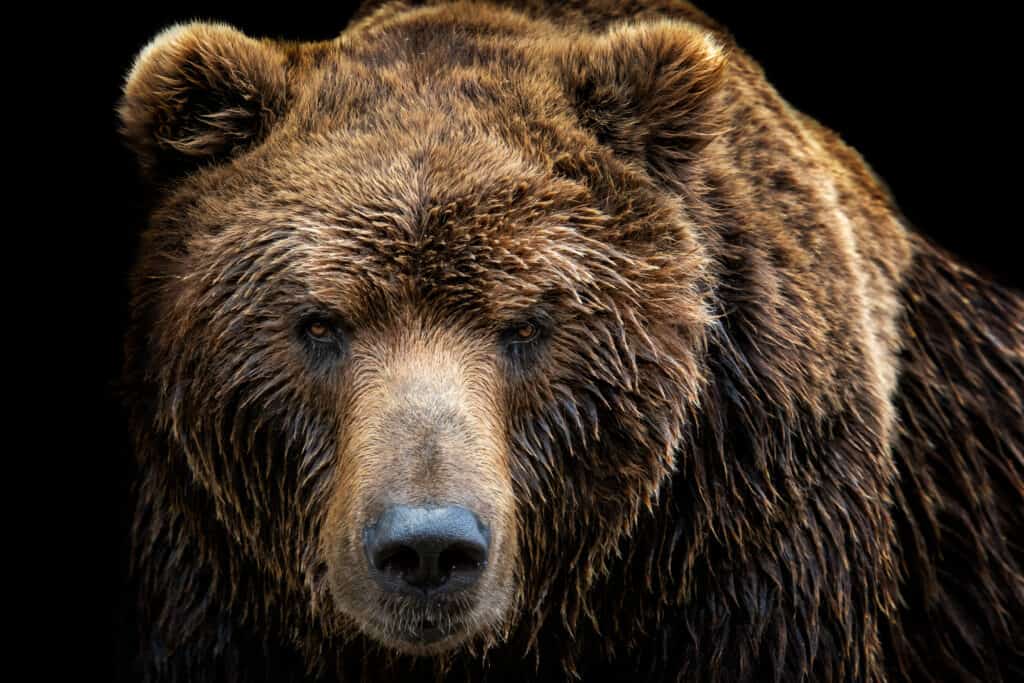
In general, grizzly bears are stronger than black bears.
©Lubos Chlubny/Shutterstock.com
Black bears are not as strong as grizzly bears. Grizzly bears can bite with a force of 1,160 PSI and swipe with a force of 7,000 to 25,000 pounds, while black bears can only bite with a force of 800 PSI and swipe with a force of 560 pounds.
It is common to observe variations in size and color between both of these types of bears in regions where both species coexist. However, black bears are usually darker and smaller than grizzly bears. Black bears can be distinguished from grizzly bears based on their physical characteristics. Usually, black bears have long ears that are less rounded and a straight profile from forehead to nose. Grizzly bears have longer front claws than they do. However, grizzly bears can be distinguished by their more prominent shoulder humps, concave facial profile, and noticeably elongated front claws, which are visible in their footprints.
How Does the Size of Black Bears Vary Across Different Regions?
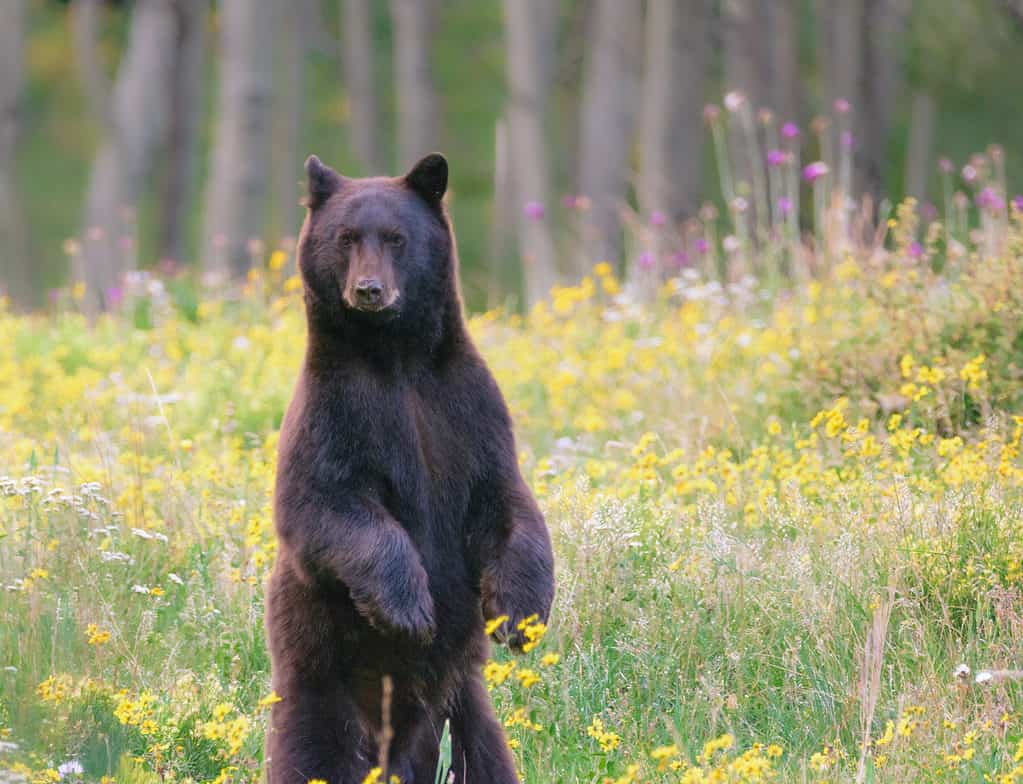
Studies show that location doesn’t much determine the size of a black bear.
©Constance Mahoney/Shutterstock.com
A recent study found that black bears tend to be around the same size regardless of where they live. However, brown bears are generally more prominent, especially in the northwest of the United States and Canada, where both species overlap. The study examined the size differences between male and female bears in both species, how bear size varies across North America from north to south latitudes, and whether populations subject to harvest differ in size compared to protected populations.
Although black bears and grizzly bears can have varying colors and sizes, black bears are typically smaller in areas where both species coexist. According to the study, male black bears can be 60% larger than their female counterparts, weighing up to 660 pounds, whereas females only reach a weight of 175 lbs. Unlike brown bears, black bears do not have a distinctive hump on their shoulders, and their faces appear straighter when viewed from the side.
What State Has the Most Black Bears?
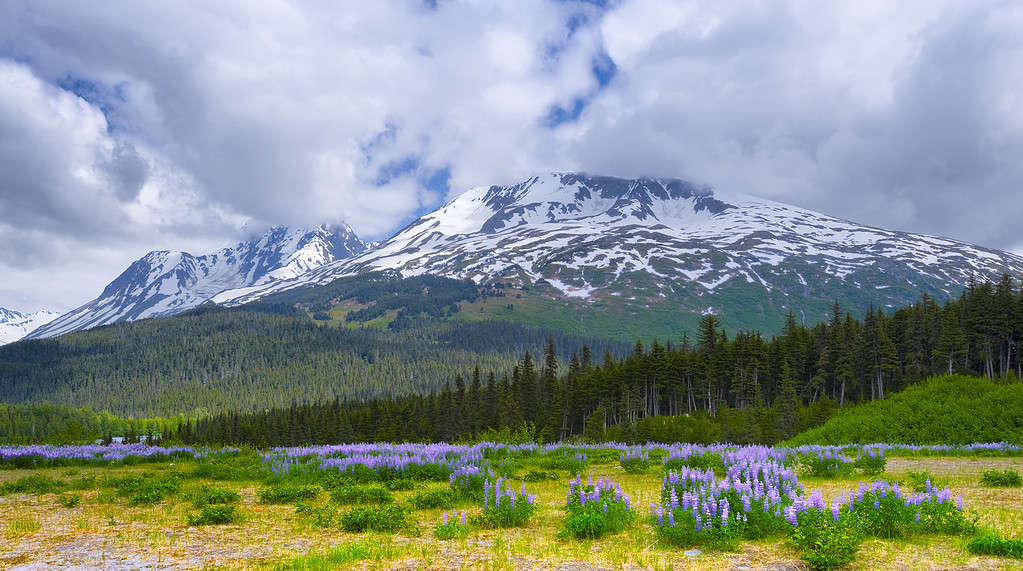
While black bears live throughout North America, the largest population of them in the United States lives in Alaska.
©Dee Browning/Shutterstock.com
Black bears can be found in 41 states, including in areas where they are not native. There are an estimated 100,000 of this type of this bear in Alaska, making it home to the largest population of these bears in the United States. California has the largest black bear population in the lower 48 states, with around 30,000 to 35,000 bears living in 52,000 square miles of land. New Mexico’s state mammal is the black bear, and its population is estimated to be around 5,000 to 6,000 bears.
Do Any US States Not Have Bears?

As common as bears are in the United States, Delaware has none.
©Alizada Studios/Shutterstock.com
The United States has three states without a black bear population: Delaware, Hawaii, and Illinois. Delaware, one of the country’s most densely populated states, has no bears, while Hawaii is the only state without bears. Although black bears are not native to Illinois, bears from neighboring states like Michigan, Minnesota, and Missouri sometimes cross over into the state, resulting in confirmed sightings.
There are several states, including Alabama, Connecticut, Kentucky, Louisiana, Mississippi, Missouri, Nevada, New Jersey, North Dakota, Ohio, Oklahoma, Texas, and Wyoming, where the black bear population is small, each having less than 1,000 bears.
Conclusion
Ted captured people’s attention worldwide with his incredible size. While the exact reasons for his impressive size remain uncertain, it is believed that factors such as his diet, genetics, and age may have contributed to it. Ted was essential to the North American Bear Center’s efforts to teach people about black bears, restore their shrinking habitats, and protect them for the future.
Ted’s story highlights the importance of protecting and preserving black bears in their natural habitat. By understanding more about these animals, we can work towards ensuring their survival and coexistence with humans.
The photo featured at the top of this post is © SCStock/Shutterstock.com
Thank you for reading! Have some feedback for us? Contact the AZ Animals editorial team.






